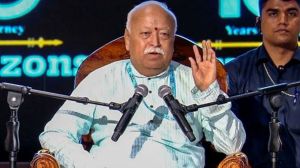Escape from Oz
Its time for the opening of the Indian mind over higher education
The recent attacks on The recent attacks on Indian students in Australia have raised another question. Why is it that nearly a lakh of our students are now enrolled in Australia (and many more in the US),contributing billions of dollars to their economies,and living on their sufferance? For a country that puffs up its chest at the idea that its upward mobility is powered by
intellectual capital,these statistics should be cause for introspection. Why is India so lamentably incompetent at providing young people a quality education? There is no question that we need a big bang in higher education,comparable to what the US accomplished in the few decades between 1870 and 1915,which effectively created the contours of the modern research university. With a population that keeps getting younger,India desperately needs a similar efflorescence. The Knowledge Commission estimates that we need at least 1500 universities across the country to pull up our gross enrolment ratio to at least 15 per cent.
But this expansion plan is hobbled by an unwieldy,counter-productive regulatory regime. Whether it is UGC,AICTE or overweening associations like the Medical Council of India,regulatory bodies do not help spreading access; they must be reoriented and pried away from the grip of various ministries. We
require a single,independent regulator to apply the same standards to private and public institutions,to credential schools,to permit entry and whittle down the MCI,Bar Council,etc. Obviously,private willingness to invest in education must be facilitated,and public spending massively increased; and we must also unclog mental bottlenecks about financing methods. Incentivising philanthropy or encouraging alumni contributions are not particularly novel ideas,they just demand a tweak in attitude,and more of what business books call the human grrr factor. Need-blind admissions,scholarships and strong affirmative action are equally part of this access agenda.
China has made a strategic decision over the last decade to channel special investments to 100 universities,priming them for world-class,Nobel-winning excellence. India cant afford not to keep up. And theres no time like now.have raised another question. Why is it that nearly a lakh of our students are now enrolled in Australia (and many more in the US),contributing billions of dollars to their economies,and living on their sufferance? For a country that puffs up its chest at the idea that its upward mobility is powered by
intellectual capital,these statistics should be cause for introspection. Why is India so lamentably incompetent at providing young people a quality education? There is no question that we need a big bang in higher education,comparable to what the US accomplished in the few decades between 1870 and 1915,which effectively created the contours of the modern research university. With a population that keeps getting younger,India desperately needs a similar efflorescence. The Knowledge Commission estimates that we need at least 1500 universities across the country to pull up our gross enrolment ratio to at least 15 per cent.
But this expansion plan is hobbled by an unwieldy,counter-productive regulatory regime. Whether it is UGC,AICTE or overweening associations like the Medical Council of India,regulatory bodies do not help spreading access; they must be reoriented and pried away from the grip of various ministries. We require a single,independent regulator to apply the same standards to private and public institutions,to credential schools,to permit entry and whittle down the MCI,Bar Council,etc. Obviously,private willingness to invest in education must be facilitated,and public spending massively increased; and we must also unclog mental bottlenecks about financing methods. Incentivising philanthropy or encouraging alumni contributions are not particularly novel ideas,they just demand a tweak in attitude,and more of what business books call the human grrr factor. Need-blind admissions,scholarships and strong affirmative action are equally part of this access agenda.
China has made a strategic decision over the last decade to channel special investments to 100 universities,priming them for world-class,Nobel-winning excellence. India cant afford not to keep up. And theres no time like now.



- 01
- 02
- 03
- 04
- 05




























